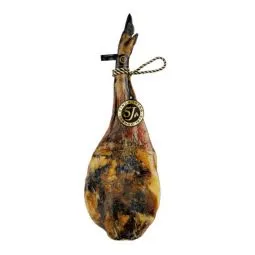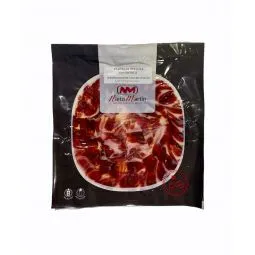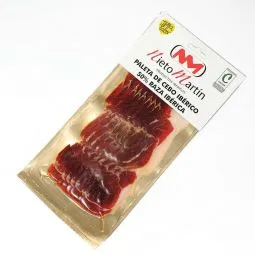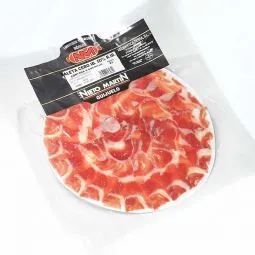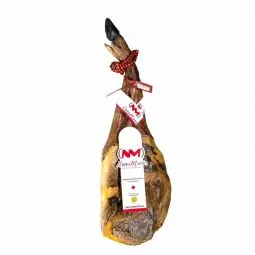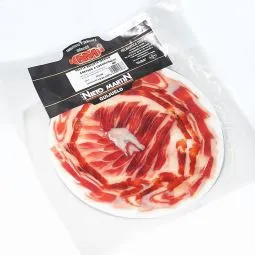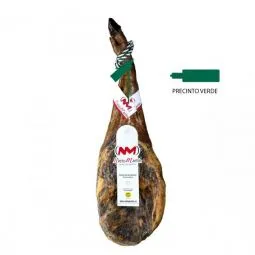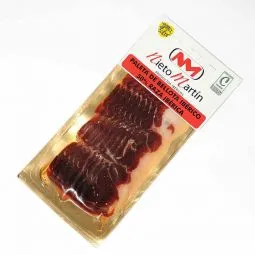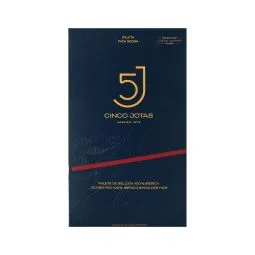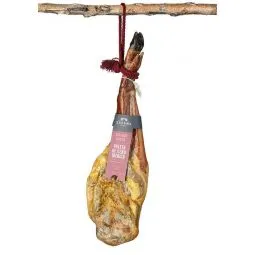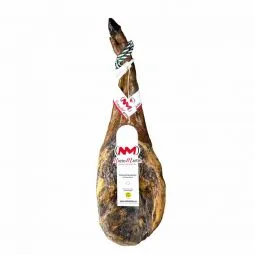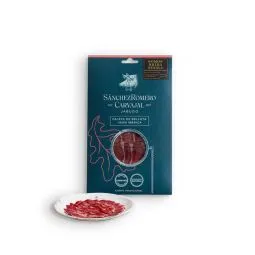BUY PORK SHOULDER HAM ONLINE: FIRST QUALITY AND VERY ECONOMIC
Possibly the pork shoulder ham is one of the biggest unknowns. While it is true that in Spain it is a product that is easily identified, abroad it is not a well-known product. For many it is a tiny pork ham.
At Gastronomic Spain we want to show you all our top quality and very cheap palettes for all budgets. Both Iberico shoulders and Serrano shoulders. So, if you live abroad and want to enjoy a good ham for very little money, Gastronomic Spain is your place. FREE shipping to all of Europe!
See moreUse our advanced search
Pork Shoulder Pata Negra 100% Iberico Guijuelo Cut With Knife
Cebo Iberico Shoulderham Sliced
Cebo Iberico Shoulderham Cut By Knife
Acorn Shoulderham
Acorn Shoulderham Cut By Knife
Recebo Iberian Pork Shoulder
Acorn Shoulderham Sliced
5 Jotas Pata Negra Shoulder Sliced
Eresma Iberian Shoulder
Cebo Iberico Shoulderham
Sliced Sanchez Romero Carvajal Pork Shoulder
Buying Arm-Shoulder Pork Online at Gastronomic Spain
The shop to find good priced cured arm-shoulder pork
When buying
Gastronomic Spain offers a great variety of cured arm-shoulder pork from the different Spanish regions and guarantees of quality and origin. You may find cured arm-shoulder pork as one piece, cut in various pieces, sliced with a knife or with a machine.
We also offer the different needed utensils such as the ham holder or the special knife used to cut and be able to enjoy a good cured arm-shoulder pork in the best way possible.
Differences between an arm-shoulder pork and a ham
Even though the arm-shoulder pork and the ham come from the same animal there are differences that determine which one is the best option depending on the client’s characteristics.
Weight of the arm-shoulder pig
Generally, a ham tends to weight around 7,5 kg, whereas the cured arm-shoulder pork average weight is 4,5-5 kg. That is because the ham comes from the back legs of the pig meanwhile the arm-shoulder pork comes from the front ones. Although some pig races might be heavier the arm-shoulder pork weight will always be proportional to the ham’s one.
Morphology of the arm-shoulder pork
Even if at first it might seem that the only difference between the ham and the arm-shoulder pork is the size, as they come from different parts of the pig the bone structure is also different.
Because of that, what will be found in the arm-shoulder pork are the pig’s scapula bones, the humerus and the radius, and the pig’s femur and tibia in the ham.
The arm-shoulder bones are more irregular than the ham ones which means that the arm-shoulder pork has a bigger loss than a ham, which means that less meat will be proportionally obtained, without taking into account the weight.
The arm-shoulder pork bone structure influences how this product has to be cut. It takes a better skilled hand to cut it than the one of a ham.
Curing of an arm-shoulder pork
The minimum curing time of a ham is 9 months for the white storeroom serrano hams, whereas the minimum curing time of an arm-shoulder pork is 7 months. Although it is true that the weigh differences between the two is almost the double, the arm-shoulder pork needs more curing time as it has a higher fat percentage than a ham.
Depending on the pig’s race the curing of an arm-shoulder pork can vary from 7 months in a white pig, until 24 months if it is a 100% Iberian pig.
Taste and fat of the arm-shoulder pork
Comparing a ham and an arm-shoulder pork from the same pig we will see a few differences. In first place the arm-shoulder pork is a fatter pork leg than the ham’s one.
The slice obtained from an arm-shoulder pork is narrower than the one of a ham. And from an arm-shoulder pork you may obtain more diverse slices conditioned by its bone structure.
The arm-shoulder pork is possible one of the greatest unknown. Although it is true that in Spain this product can be easily identified, abroad is only identified as a small ham.
It is important to know this product as it is quite different from the ham regarding fat percentage and morphology. And this second fact will also determine how easy will be to cut.
Curing process of an arm-shoulder pork
The curing process of an arm-shoulder pork is similar to the one of the ham but shorter in time as its weight is inferior. To obtain a cured arm-shoulder pork the process to follow is:
1. Salting. During this first stage we will cover the arm-shoulder pork with salt. The arm-shoulder pork will rest covered in salt in a fridge at at temperature of 1℃ and with a humidity percentage between 75% and 94%.
2. Post-salted. The arm-shoulder pork is taken to a post-salted chamber in which it will be there for at least 40 days. The chamber will have a temperature between 0℃ and 4℃. During this process the nitrifiers and the salt penetrate homogeneously the arm-shoulder pork. During this process the growth of microbes is inhibit and the hydrolysis takes place, which is responsible for the characteristic smell and taste of the arm-shoulder pork.
3. 1st drying phase. During this first drying phase the amount of water in the arm-shoulder pork will be half reduced. Also, part of the fat is going to be naturally sweated. At this phase it also starts the spreading of the salt throw the whole arm-shoulder pork.
4. 2nd drying phase. The dehydration of the arm-shoulder pork continues as well as the fat sweat. At this phase the chamber temperature can reach 34℃ and a humidity level between 60% and 80%.
5. Aging and ending of the curing. In this phase the pork pieces are stored in a storeroom at a temperature not higher than 18℃ and with a 60% humidity. This is the longest phase, in it the arm-shoulder pork acquires its characteristic taste, colour, texture and smell.
How to cut a cured arm-shoulder pork?
Many consider cutting ham to be or an art or a nightmare. At the time of facing a cured arm-shoulder pork one needs to accept that it will be different than cutting a ham. The cut will be conditioned by the scapula and it is needed to make different cuts to easily get ham slices.
To cut an arm-shoulder pork by knife these steps need to be followed:
1st. Utensil to cut an Iberian arm-shoulder pork or a Serrano one.
The utensils we need to cut an Iberian arm-shoulder pork or a Serrano one are these: ham knife, wrecker knife, sharpener, beetle knife, tongs and ham holder. We recommend to also have near a cloth and water to periodically washed your hands.
*All these utensils may be found in Gastronomic Spain.
2nd Put the arm-shoulder pork in the ham holder.
First things first, the arm-shoulder pork needs to be put in the ham holder with the pig’s hoof facing up. The ham holder will be the same for an arm-shoulder pork and for a ham.
3rd Start cutting.
Before starting cutting the arm-shoulder pork it is important to know if it will be entirely eaten that same day or if only a bit it going to be cut. If it is the case that all is going to be cut, we recommend to peal the whole arm-shoulder pork and take out that excess of yellow fat.
If, on the contrary, only a piece is going to be cut, we recommend cutting the skin and the fat excess of the part that is going to be cut and keep it to cover the cut part and use it as a natural cover.
Firstly, the meat concentrated in the hock (humid bone) needs to be taken out. Taking it sliced is hard, so it is better to take it as a whole and cutting easily on a board.
Secondly, we start slicing the meat between the hock and the scapula (what it would be the radius bone). When reaching the scapula, we will have to find the union between the bone and the meat to make an incision and from it a slice will separate on its own. Once finished that side of the arm-shoulder pork, you turn it around and start cutting the other side.
